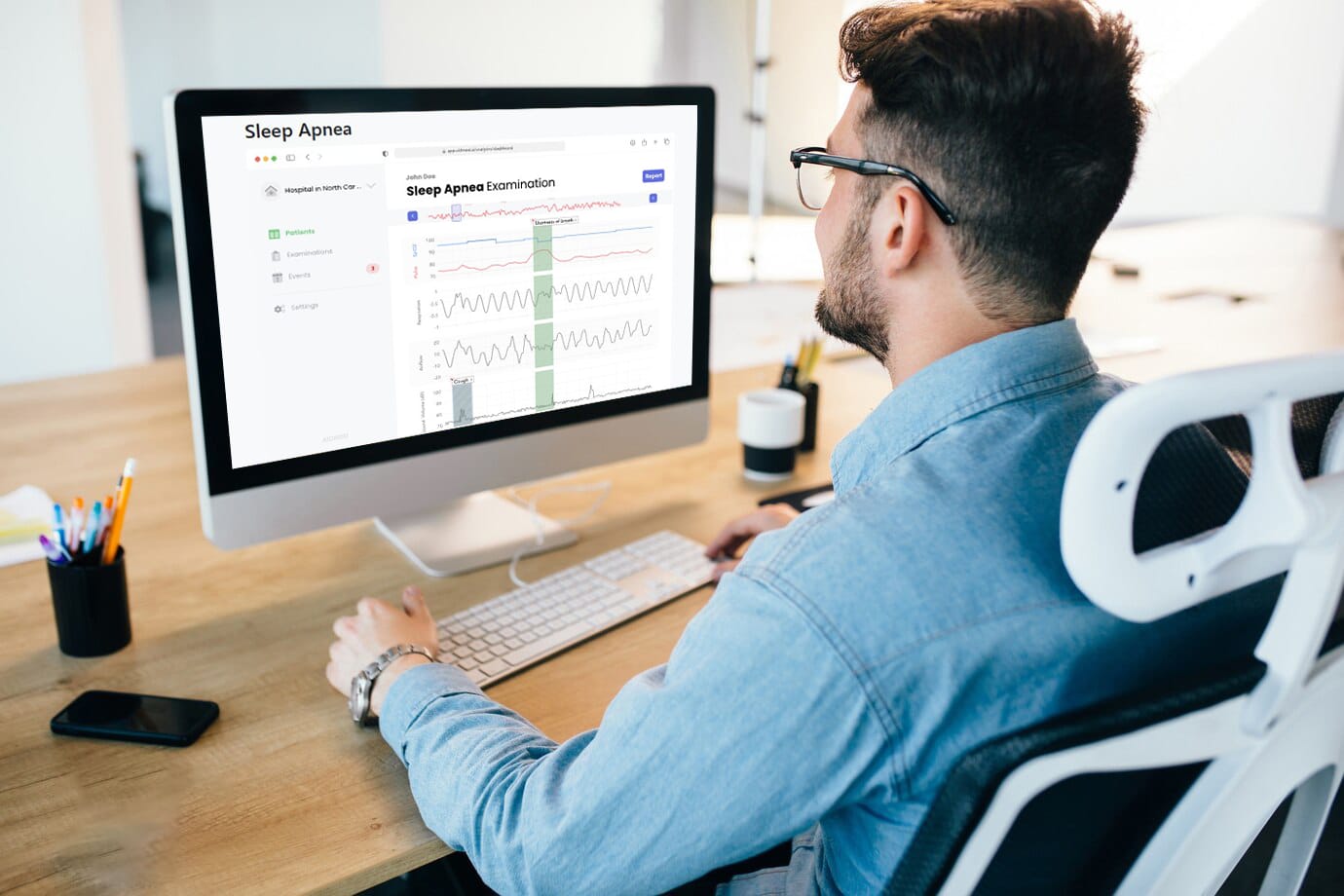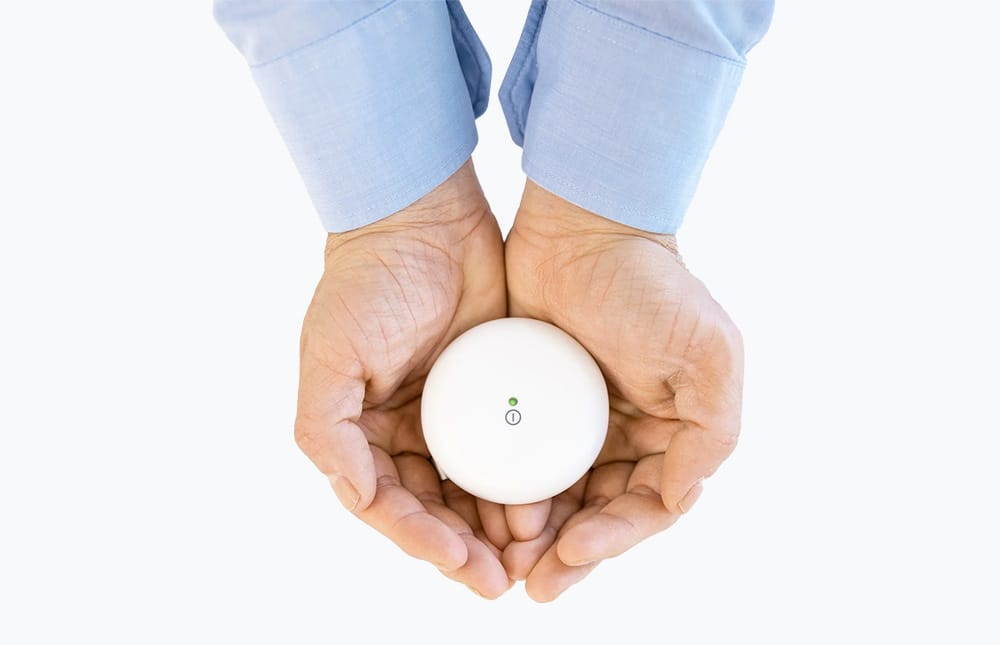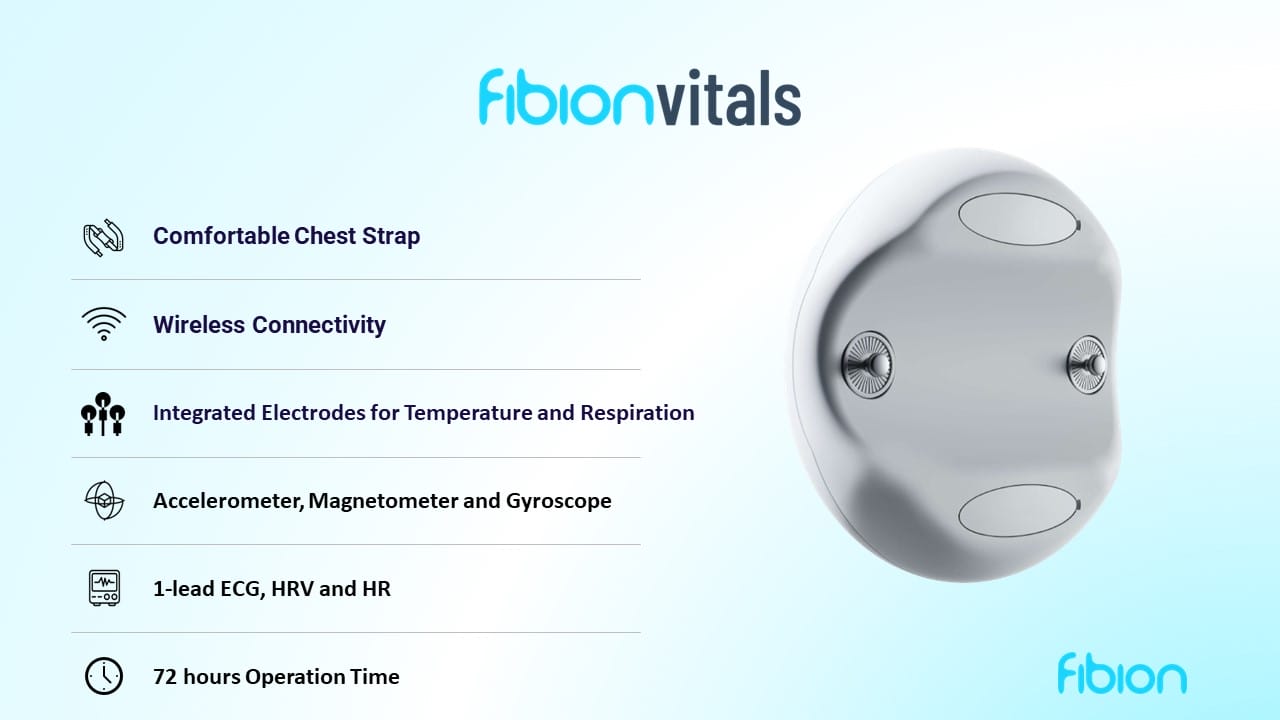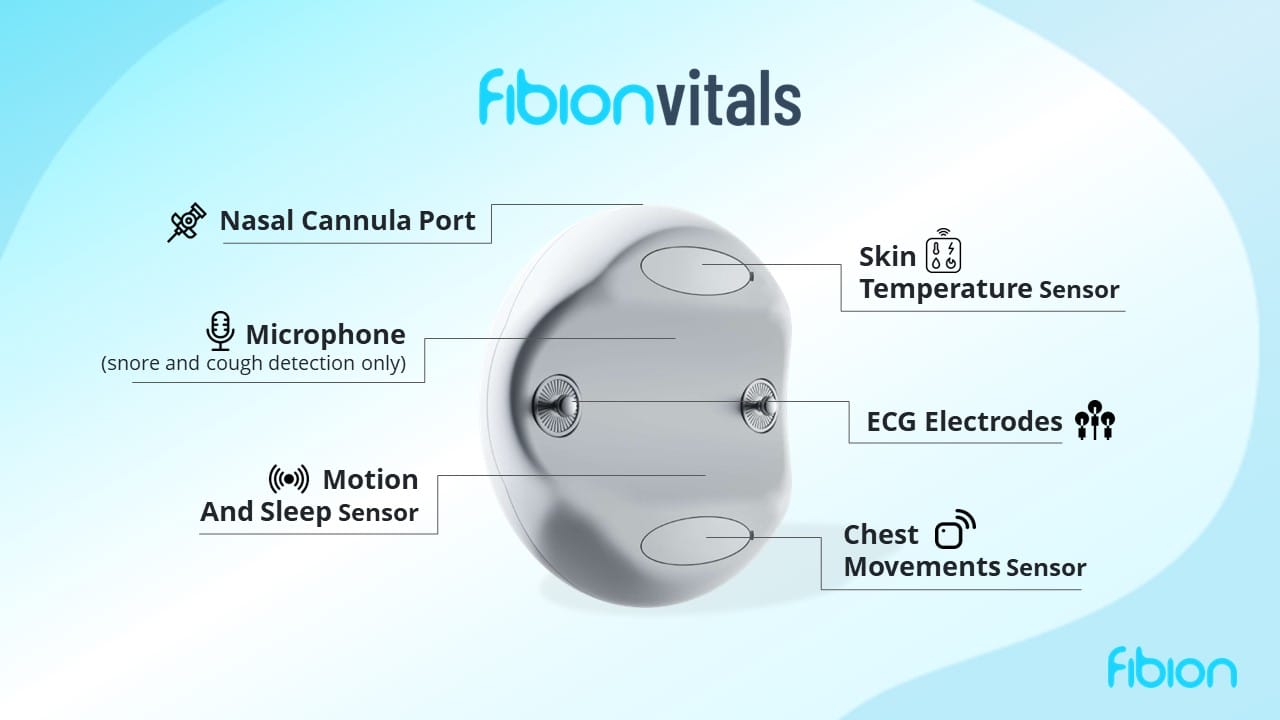Introduction
Sleep disordered breathing encompasses a range of conditions that disrupt normal breathing patterns during sleep, with obstructive sleep apnea being one of the most studied. Precise diagnosis and research into these conditions hinge on detailed and accurate data collection, traditionally obtained through Polysomnography (PSG).
However, the complexity and cumbersome nature of PSG setups pose significant challenges, particularly for studies conducted in home settings. This has led to a demand for simpler, yet equally accurate, methods of data collection.

Enter Fibion Vitals, an innovative wearable device designed to streamline sleep disordered breathing research without sacrificing data quality. In contrast to the intricate and often uncomfortable setup required by PSG, Fibion Vitals offers an easy-to-use, participant-friendly solution that captures a wide range of vital physiological signals relevant to sleep disorders.
“Fibion Vitals blends sleep lab depth with wearable ease, making measurements of sleep-disordered breathing easier even at home.”
This article dives into the features and advantages of Fibion Vitals compared to traditional PSG, emphasizing its potential to transform sleep disordered breathing studies with its simplicity and precision.
Understanding Sleep Disordered Breathing
Sleep disordered breathing (SDB) represents a spectrum of conditions that impair respiratory patterns during sleep, the most common of which is obstructive sleep apnea (OSA). These conditions are characterized by repeated interruptions in breathing due to the partial or complete obstruction of the airway, leading to fragmented sleep and decreased oxygen saturation. The implications of untreated SDB range from daytime fatigue and cognitive impairment to more serious cardiovascular risks.
The Importance of Accurate Diagnosis

Accurate diagnosis and study of SDB are paramount for developing effective treatment plans and understanding the broader health implications of these conditions. Traditional diagnostic methods, such as Polysomnography (PSG), while considered the gold standard, involve complex setups including multiple sensors and wires that can disrupt natural sleep patterns, potentially skewing data accuracy. Moreover, the technical expertise required for PSG setup and data analysis limits its applicability in home-based studies, where simplicity and patient comfort are key.
The Limitations of PSG in Sleep Disordered Breathing Studies

Polysomnography (PSG) has long been the cornerstone of sleep disorder diagnosis, including sleep-disordered breathing. It offers a comprehensive array of data through various sensors that measure brain waves, oxygen levels in the blood, heart rate, breathing, as well as eye and leg movements. Despite its thoroughness, PSG comes with notable limitations, especially when deployed for home-based studies.
Complexity and Comfort: The complexity of the PSG setup, which often requires professional assistance, poses a significant barrier. The array of wires and sensors can be intrusive, potentially altering the natural sleep behavior of participants. This complexity extends to the data analysis phase, demanding specialized knowledge to interpret the results accurately.
Accessibility and Practicality: Conducting PSG studies outside a sleep laboratory is challenging. The equipment is not only expensive but also less accessible for widespread home-based studies. This limitation restricts the scalability of research, particularly studies aiming to gather longitudinal data across diverse populations.
Emerging Technologies in SDB Research

The limitations of PSG have prompted researchers to explore alternative methods for studying SDB in more naturalistic settings. Wearable technologies, capable of monitoring a range of physiological signals without intruding on the participant’s normal sleep routine, have emerged as promising tools in this domain.
Among these, Fibion Vitals stands out for its comprehensive data collection capabilities, ease of use, and non-intrusive design, offering a viable alternative to traditional PSG for studying sleep disordered breathing in home settings.
“Moving past wires and sensors, Fibion Vitals opens new possibilities in sleep studies“
In the following sections, we’ll delve deeper into the features of Fibion Vitals and compare its performance and applicability to PSG in the context of sleep disordered breathing research.
Fibion Vitals: Ease and Accuracy Combined

Fibion Vitals emerges as an innovative solution designed to overcome the limitations of traditional PSG, especially for sleep disordered breathing research. This wearable technology simplifies the data collection process while ensuring the accuracy and depth of information essential for comprehensive studies.
Simplified Setup: Unlike PSG, Fibion Vitals features an easy-to-use design that participants can set up themselves, significantly reducing the intrusion into natural sleep patterns. This simplicity enhances participant comfort and compliance, leading to more authentic data collection.
“Fibion Vitals blends simplicity with detail, creating sleep data almost as rich as PSG but from the natural sleep of home environment.”
Comprehensive Data Collection: Fibion Vitals tracks a wide array of physiological signals relevant to sleep disordered breathing, including:
- Sleep Positions: Detects changes in position that may affect breathing patterns.
- Respiration and Oxygen Saturation: Integrated nasal cannula and pulse oximetry provide detailed insights into breathing irregularities and oxygen levels, crucial for diagnosing sleep apnea.
- Heart Rate Variability (HRV) and ECG: Offers insights into autonomic nervous system activity during sleep.
Advantages Over PSG: The wearable nature of Fibion Vitals, combined with its comprehensive data collection capabilities, presents a unique advantage over PSG in home-based research settings. It allows for the gathering of detailed physiological data without the need for complex equipment or professional setup, making it ideal for longitudinal studies across wider participant groups.
The Future of Sleep Disordered Breathing Research

The evolution of sleep research technology, particularly with the introduction of devices like Fibion Vitals, signals a promising shift towards more accessible, less intrusive, and highly accurate sleep disorder studies conducted in the comfort of participants’ homes.
This shift not only promises to enhance the quality and authenticity of data collected but also opens the door to broader participation in sleep studies, a crucial factor in understanding and addressing sleep disordered breathing across diverse populations.
Embracing Technological Advancements:
- The continued innovation in wearable technology and sleep research tools will likely lead to even more refined data collection methods, offering clearer insights into the mechanisms of sleep disordered breathing and potential intervention strategies.
- The integration of artificial intelligence and machine learning in data analysis could further streamline the research process, offering predictive insights and personalized treatment recommendations.
“Stepping into the future, Fibion Vitals opens new possibilities to understand and tackle sleep disordered breathing.”
Expanding Research Horizons:
- With tools like Fibion Vitals, researchers can now design studies that were previously impractical due to the logistical and technical limitations of PSG, paving the way for groundbreaking discoveries in sleep science.
- The ability to conduct longitudinal studies with minimal intrusion on participants’ daily lives could significantly improve our understanding of sleep disordered breathing’s long-term impacts and treatment efficacy.
Conclusion
The comparison between Fibion Vitals and traditional PSG highlights new possibilities in sleep disordered breathing research at home settings. With its ease of use, comprehensive data collection, and participant-friendly design, Fibion Vitals stands out as a great choice for researchers seeking to advance our understanding of sleep disorders in home settings.
As the field continues to embrace these technological advancements, the future of sleep research looks promising, with the potential to significantly improve diagnosis, treatment, and our overall understanding of sleep health.
Call to action




Frequently Asked Questions:
How does Fibion Vitals simplify sleep disordered breathing research compared to PSG? +
Fibion Vitals offers a user-friendly, wearable solution that captures extensive physiological data relevant to sleep disorders, eliminating the need for complex setups like PSG.
What key physiological signals does Fibion Vitals monitor for sleep apnea research? +
Fibion Vitals measures sleep positions, respiration and oxygen saturation, heart rate variability (HRV), and ECG, providing comprehensive insights into sleep health.
Can Fibion Vitals be used for home-based sleep apnea studies? +
Yes, its ease of use and non-intrusive design make Fibion Vitals ideal for collecting accurate sleep data in the comfort of participants’ homes.
What are the limitations of using PSG for home-based sleep studies? +
PSG’s complexity, need for professional setup, and intrusiveness can disrupt natural sleep patterns and limit its feasibility for home use.
How does the data quality of Fibion Vitals compare to PSG? +
Fibion Vitals provides high-quality data on key physiological parameters relevant to sleep apnea, comparable to the detailed analysis offered by PSG.
What makes Fibion Vitals a superior choice for sleep disordered breathing research? +
Its combination of ease of use, comprehensive data collection, and adaptability to home settings positions Fibion Vitals as a superior tool for advanced sleep research.









